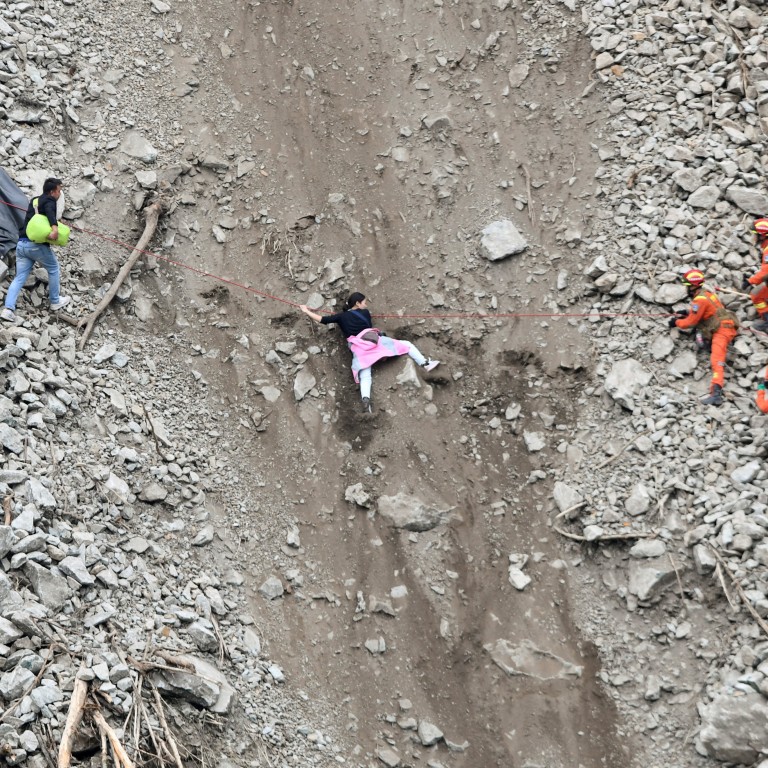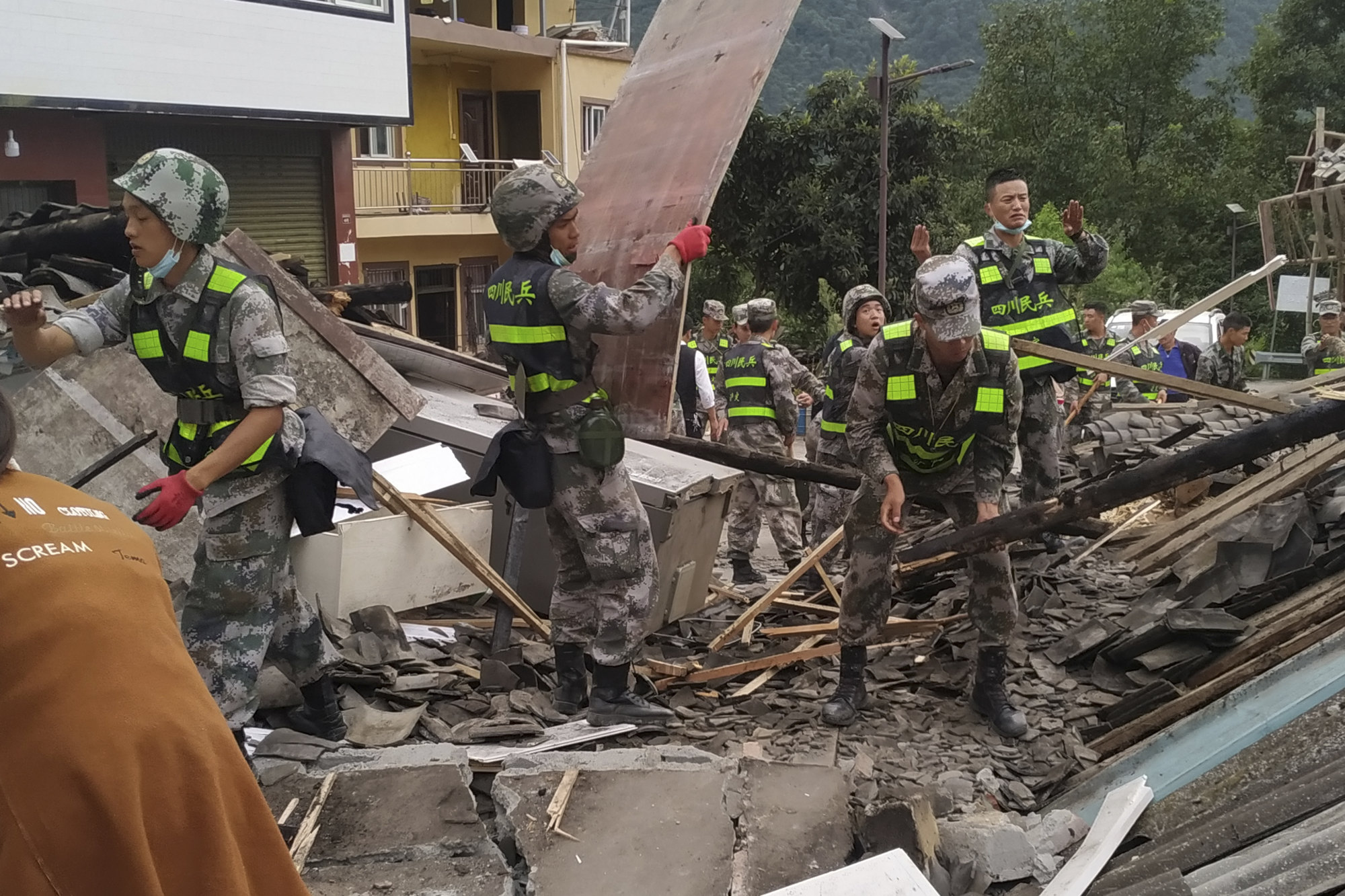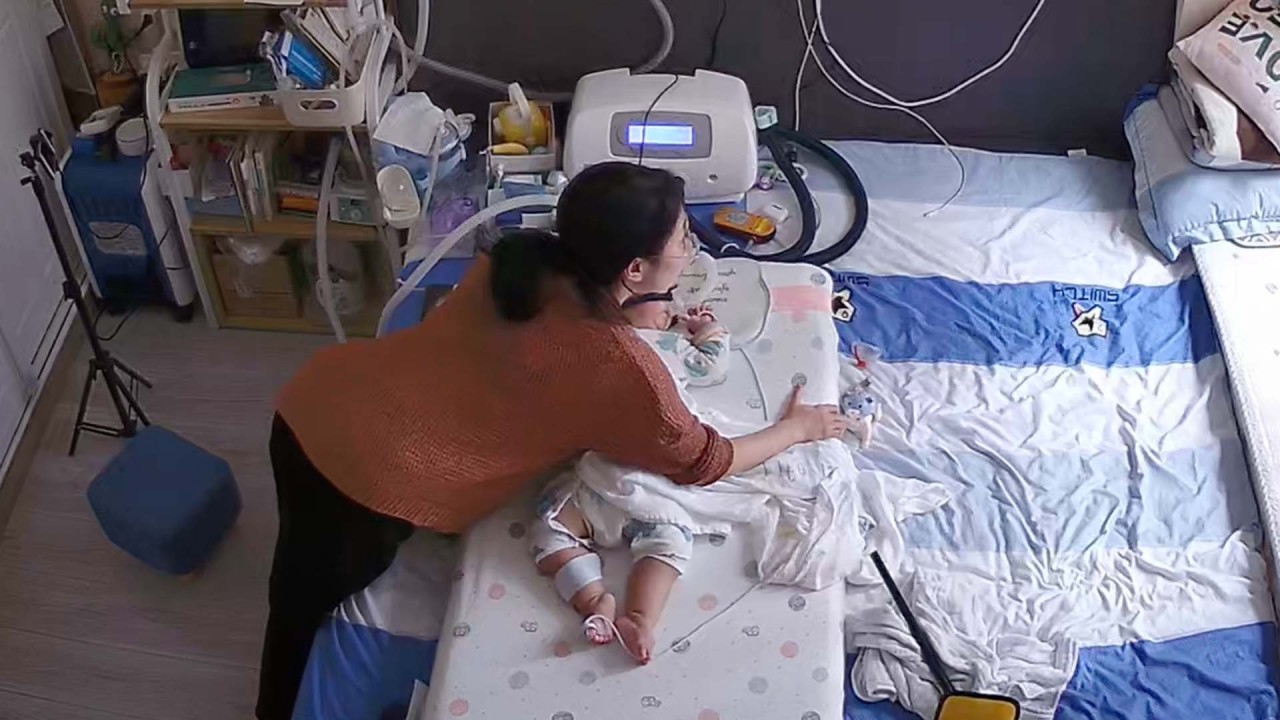
China earthquake: death toll climbs to 74 as Sichuan authorities restrict entry to disaster zone
- 35 people are still missing as health authorities report new Covid-19 infections
- Heavy rainfall expected in the region after severe damage from landslides
China’s Sichuan province banned unauthorised people entry to earthquake zones and imposed daily testing as it struggled to battle Covid-19 while rescue work continued for the third day.
Public health authorities in the southwestern Chinese province also reported 157 new Covid-19 infections as of the end of Tuesday, compared with 138 the day before.

The disaster has prompted the authorities to place Luding county and the nearby tourist hotspot of Hailuogou under temporary restrictions, according to a directive by the Ganzi prefecture emergency command centre for Covid-19. No unauthorised entry is allowed for people and vehicles, including members of the public volunteering for rescue efforts.

Entry permits issued to rescue personnel must be accompanied by a negative PCR test result within 24 hours, a green health code, and no travel history in cities with Covid-19 cases, according to the notice. Rescuers must be tested for Covid-19 every 24 hours.
Tourist and public recreation facilities, schools and religious venues are closed.
Of the 74 dead, 40 victims were from the Ganzi Tibetan autonomous prefecture and 34 were residents of the city of Yaan in the west of the province, Xinhua reported.
The earthquake levelled a large area of housing in a township in Luding.
Local weather forecasters said they expected heavy rainfall in the quake zone over the next three days.
Chinese province of Sichuan warns of ‘particularly severe’ power shortages
Severe landslides caused by the earthquake in the mountainous region blocked two rivers, forming a dammed lake. About 1,000 people from Wandong and Ziyachang villages have been trapped as a result, local media reported.
The earthquake has seen 13,232 residents displaced and another 10,657 residents evacuated to safer places. Nearly 7,000 rescuers have been deployed to the disaster zone, state media CCTV reported.
The landslides also caused heavy damage to the provincial highway network, blocking roads, bridges and passageways.
‘Crazy hot’ temperatures in Sichuan result in rolling blackouts, power curbs
In 2008, a magnitude 8.0 earthquake centred in Wenchuan killed hundreds of thousands of people and flattened entire villages. The region also saw two deadly magnitude 7.0 earthquakes in 2013 and 2017.



